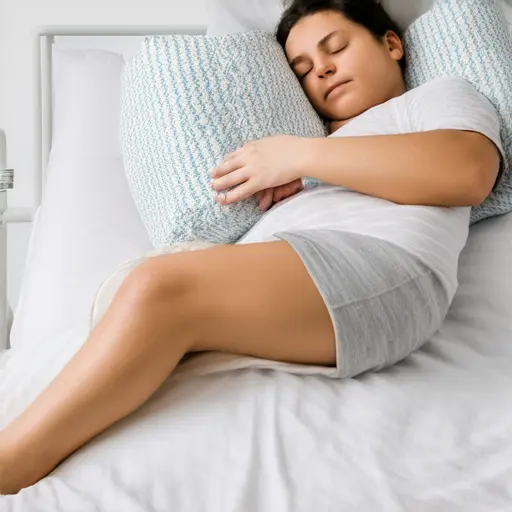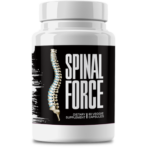This Village-Made Chinese Pain Reliever Eliminates Back And Joint Pain!
How to Sleep Better with Knee Pain on Side of Knee

How to Sleep Better with Knee Pain on the Side of Your Knee
If you’ve ever dealt with knee pain on the side of your knee, you know just how maddening it can be—especially when it keeps you up at night. Whether it’s a constant ache or sharp jabs of discomfort, that nagging lateral knee pain can turn finding a cozy sleep position into a nightly battle. But here’s the good news: you don’t have to suffer through sleepless nights. This guide will walk you through the causes, the best sleep positions, and simple pain-relief tricks to help you finally catch those Z’s.
Why Does the Side of My Knee Hurt?
Lateral knee pain—that discomfort along the outer part of your knee—isn’t just your average joint ache. It can come from irritated tendons, worn-down cartilage, or even tight muscles. Pinpointing the real culprit is your first step toward relief.
Common Causes of Side Knee Pain
So, what’s behind that pesky knee pain on the side of your knee? A few usual suspects:
- IT Band Syndrome – That thick band of tissue running down your outer thigh? When it’s tight or overworked, it can pull on your knee.
- Lateral Meniscus Tear – The knee’s shock absorber gets damaged, leading to pain with every step (or toss in bed).
- LCL Sprains – The ligament on the outer knee gets stretched or torn—common in sports or awkward twists.
- Arthritis – Wear-and-tear or inflammation that makes joints stiff and achy, especially at night.
Who’s Most at Risk?
Runners, weekend warriors, and anyone with uneven leg strength often face this issue. But even everyday habits (like sitting cross-legged too much) can contribute.
Why Knee Pain Feels Worse at Night
Ever notice how your knee throbs more when you’re trying to sleep? Lying still lets inflammation build up, and pressure from certain positions can turn mild pain into a real nuisance.
Sleep Positions That Actually Help
Your go-to sleep pose might be making things worse. Here’s how to tweak it for happier knees.
Side Sleepers, Listen Up
If you’re a side sleeper (like most of us):
- Pillow between the knees – It keeps hips aligned and takes pressure off the sore knee.
- Bend the top leg slightly – A straight leg strains the joint; a gentle bend eases tension.
Back Sleeping: The Underrated Hero
Not a back sleeper? Try it with a pillow under your knees—it supports your spine and gives your knees a break.
Positions to Avoid
Steer clear of:
- The fetal position – Cramming your knees into your chest increases pressure.
- Stomach sleeping – Twists your knee awkwardly—recipe for morning stiffness.
Your Bed Setup Matters More Than You Think
The right pillow or mattress can be a game-changer.
Pillow Talk for Knee Pain
A memory foam pillow between your knees molds to your shape, keeping everything aligned.
Mattress Sweet Spot
Too soft? Your knee sinks. Too firm? Pressure points flare up. Aim for medium-firm—just enough cushion without sacrificing support.
Knee Wedges: Not Just for Pregnancy
A wedge pillow under your knee gently elevates it, reducing swelling and improving blood flow while you sleep.
Pre-Bed Stretches to Quiet Knee Pain
A few minutes of gentle movement can mean the difference between restlessness and rest.
Easy Stretches to Try
- IT Band Stretch – Cross one leg behind the other and lean away (like you’re avoiding someone’s bad breath). Hold for 20 seconds.
- Seated Hamstring Stretch – Sit tall, extend one leg, and reach for your toes (no bouncing!).
Strengthening = Stability
Weak muscles let your knee take the brunt. Try clamshells or straight-leg raises a few times a week.
When to Skip the Workout
Save the high-intensity stuff for earlier in the day—late-night squats might leave you too achy to sleep.
Pain Relief Hacks for Better Sleep
Sometimes you need a little extra help to drift off.
Ice vs. Heat: Which Wins?
Ice is your friend if your knee is swollen. Heat works better for stiff, achy joints—try a warm bath before bed.
OTC Pain Meds: Quick Fix or Bad Idea?
NSAIDs like ibuprofen can take the edge off occasionally, but don’t make them a nightly habit without checking with your doctor.
When to Call the Doc
If pain sticks around for weeks or keeps you awake despite trying everything, it’s time for a professional opinion.
Small Daily Changes, Big Nightly Differences
What you do all day affects how you feel at night.
Weight and Knee Pain: The Connection
Even losing 5-10 pounds can take significant pressure off your knees—think of it as lightening your joint’s load.
Foods That Fuel Inflammation
Cut back on sugar, processed snacks, and alcohol. They’re like throwing gasoline on your knee pain fire.
Hydration’s Sneaky Role
Dehydrated joints are creaky joints. Aim for half your body weight in ounces of water daily (e.g., 150 lbs = 75 oz).
When It’s More Than Just Annoying Pain
Some signs mean it’s time to skip Dr. Google and see a real doctor.
Red Flags
- Can’t put weight on it without sharp pain.
- Knee locks up or makes unsettling popping noises.
What Happens at the Doctor’s Office
They might order an X-ray or MRI, suggest physical therapy, or discuss long-term solutions like injections.
Chronic Pain? You’ve Got Options
From custom braces to minimally invasive procedures, modern treatments go way beyond “just live with it.”
Wrapping It Up
Your Knee Pain Sleep Cheat Sheet:
- Sleep on your side with a pillow between your knees, or on your back with knee support.
- Invest in a supportive mattress and knee-friendly pillows.
- Stretch gently before bed and manage pain wisely.
With these tweaks, you can reclaim restful nights. But remember—if pain overstays its welcome, a healthcare provider can help tailor a solution just for you. Sweet dreams!








